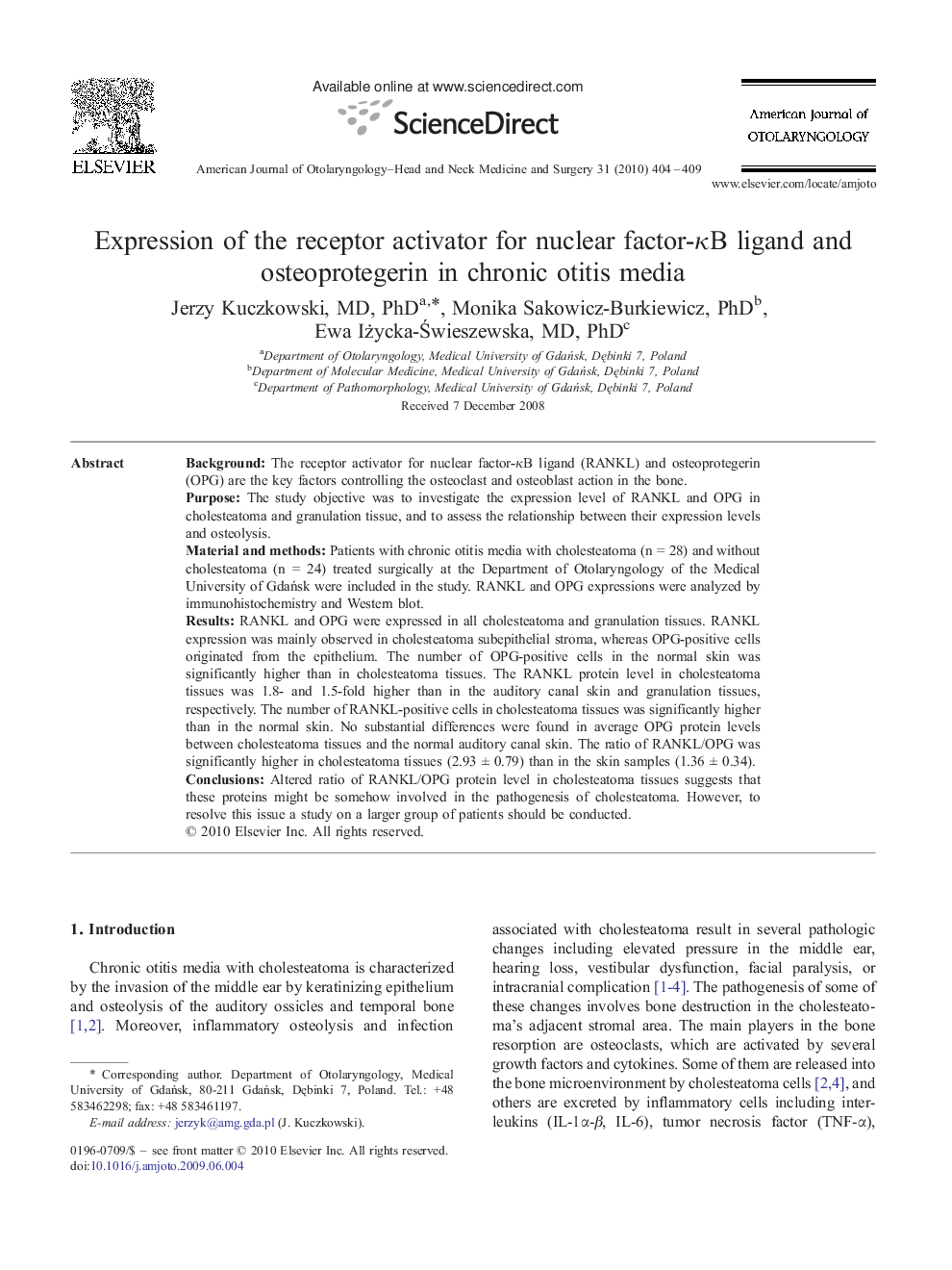| Article ID | Journal | Published Year | Pages | File Type |
|---|---|---|---|---|
| 4104051 | American Journal of Otolaryngology | 2010 | 6 Pages |
BackgroundThe receptor activator for nuclear factor-κB ligand (RANKL) and osteoprotegerin (OPG) are the key factors controlling the osteoclast and osteoblast action in the bone.PurposeThe study objective was to investigate the expression level of RANKL and OPG in cholesteatoma and granulation tissue, and to assess the relationship between their expression levels and osteolysis.Material and methodsPatients with chronic otitis media with cholesteatoma (n = 28) and without cholesteatoma (n = 24) treated surgically at the Department of Otolaryngology of the Medical University of Gdańsk were included in the study. RANKL and OPG expressions were analyzed by immunohistochemistry and Western blot.ResultsRANKL and OPG were expressed in all cholesteatoma and granulation tissues. RANKL expression was mainly observed in cholesteatoma subepithelial stroma, whereas OPG-positive cells originated from the epithelium. The number of OPG-positive cells in the normal skin was significantly higher than in cholesteatoma tissues. The RANKL protein level in cholesteatoma tissues was 1.8- and 1.5-fold higher than in the auditory canal skin and granulation tissues, respectively. The number of RANKL-positive cells in cholesteatoma tissues was significantly higher than in the normal skin. No substantial differences were found in average OPG protein levels between cholesteatoma tissues and the normal auditory canal skin. The ratio of RANKL/OPG was significantly higher in cholesteatoma tissues (2.93 ± 0.79) than in the skin samples (1.36 ± 0.34).ConclusionsAltered ratio of RANKL/OPG protein level in cholesteatoma tissues suggests that these proteins might be somehow involved in the pathogenesis of cholesteatoma. However, to resolve this issue a study on a larger group of patients should be conducted.
